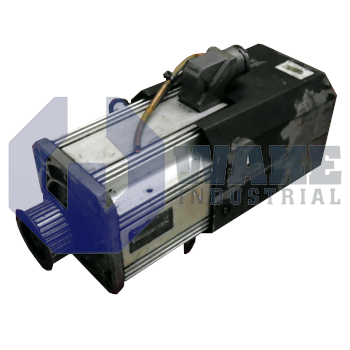Product Description
Bosch Rexroth manufactures the asynchronous servo motor MAD100B-0200-SA-S2-EG0-35-N1. These asynchronous motors are appropriate for usage in situations where it's necessary to securely move and manage large external inertias in machinery and plants. An asynchronous motor requires no electrical links to the rotor because it operates by electromagnetic induction. This motor variant does not run at a synchronous speed. With respect to frequency, there is the rotor slippage; typically, this is about 5%. A 90% potential output may be produced by an AC motor, depending on the motor's size.
The MAD100B-0200-SA-S2-EG0-35-A1 can run at a maximum predetermined rated speed of 2000 rpm that depends on the mechanical components of the MAD series motor like bearings and is maintained by an absolute encoder. The integrated STG encoder accurately measures a single revolution and transmits rotational information to the motor in the form of digital impulses containing 2048 increments. The stator winding's main purpose is to produce a magnetic field. The basic mechanism that powers electric motors is the interaction of this magnetic field with the rotor resulting in mechanical motion.
The axial fan is driven by the motor, which supplies the required mechanical energy. The purpose of axial fans is to move huge amounts of airflow in a path that is parallel to the axis of the motor. A motor's drive shaft transmits power, supports suspension, regulates torque, and dampens vibration and noise. To generate rotation, the armature of a 3-pole asynchronous motor consists of three windings that are sequentially excited. There are two ways to attach the machine to this Indradyn motor of B35 frame design: the foot assembly technique and the flange assembly technique.
 Wake Industrial Warranty
Wake Industrial Warranty















